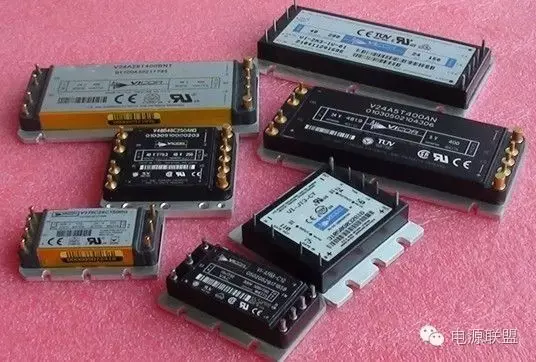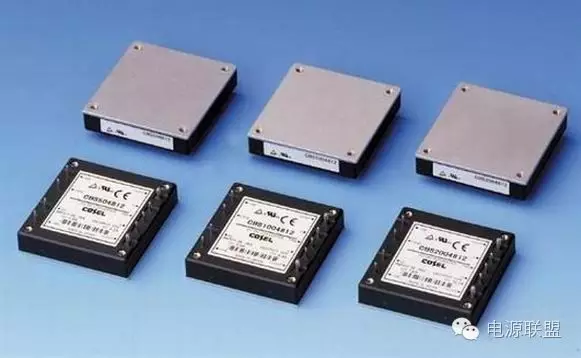
 :Click↑“Wanyi Strict Selection” to subscribe to the first self-media in the high-reliability power supply industry
:Click↑“Wanyi Strict Selection” to subscribe to the first self-media in the high-reliability power supply industry
Wanyi Strict Selection—The First Self-Media in the High-Reliability Power Supply Industry
Here you can find power supply technology insights, analysis of power supply industry trends, introduction of the latest power supply products, and many power supply experts sharing their technical experiences. Follow us and grow together with the Chinese power supply industry!
Why Many Large Enterprises Use Modular Power Supplies Instead of Switching Power Supplies
Introduction
DC/DC power modules are implemented using the principles of switching power supplies, and their working principles are not significantly different. The advantages of DC/DC power modules mainly lie in their small size, high conversion efficiency, and better stability. On the other hand, switching power supplies can handle larger power outputs and are generally less expensive, but they are bulkier, have lower conversion efficiency, and their stability is not as high as that of power modules.
DC-DC can be classified into buck and boost converters; here we will only discuss buck converters. For instance, if you input 10V to a DC-DC converter, it has an internal oscillator and chopping module that allows 10V to pass through during one time period and blocks it during another (effectively maintaining 10V). At the output end, there is a capacitor for filtering; as long as the capacitor is sufficiently large, the result is equivalent to integrating the intermediate pulse waveform, resulting in a 5V DC waveform.

This buck process minimizes energy loss across the buck module and allows the internal oscillation part to control the duty cycle to change the output voltage (within the 10V range), ensuring a constant output (for example, a certain DC/DC power module specifies an input range of 6V to 16V with a 5V output; as long as it is within this input range, the output remains at 5V with an error of only a few millivolts, whereas a linear regulator’s output has a significant relationship with the input voltage, leading to larger differences in output voltages for input values of 7V and 14V).
Advantages of Using Power Modules:
Different suppliers offer various power modules in the market, with different input voltages, output powers, functions, and topologies. Currently, the power module market is relatively mature, with many standardized products that can help electronic designers quickly complete power supply circuit designs. Yushun Electronics designs and manufactures products according to industry standards to meet most product demands for power modules. They also adapt and optimize products based on customer requirements to satisfy personalized needs as much as possible.

Using power modules can save development time, allowing products to reach the market faster; thus, power modules are superior to integrated solutions. Power modules also have several other advantages:
1) Small size. Power modules are a type of switching power supply but use a higher integration of PCB boards and components, along with reasonable layout and design, giving them a significant advantage in size, effectively reducing the size of developed products.
2) Each module can be rigorously tested to ensure high reliability, including power-on tests to eliminate non-compliant products. In contrast, integrated solutions are harder to test because the entire power supply system is tightly integrated with other functional systems on the circuit. Each power module also undergoes strict high-temperature testing and aging, ensuring stable product performance.
3) Different suppliers can design modules of the same size according to existing technical standards, providing engineers designing power supplies with various options. They can also adjust pin names, sizes, shapes, etc., to better meet customer needs.
4) Power modules are generally more efficient than switching power supplies, effectively reducing energy consumption. High-efficiency conversion makes target products more competitive and aligns with current energy-saving development requirements for environmentally friendly products.
5) The design and testing of each module follow standard performance specifications, which helps reduce risks associated with adopting new technologies.
6) They are easy to use and maintain efficiently. If an integrated solution encounters a problem, the entire mainboard must be replaced; however, with a modular design, only the problematic module needs to be replaced, saving costs and development time.
7) Power module products are generally encapsulated with glue, making them less susceptible to external influences such as dust and vibration, allowing them to better adapt to different usage environments.
Wanyi Strict Selection—The First Self-Media in the High-Reliability Power Supply Industry
Here you can find power supply technology insights, analysis of power supply industry trends, introduction of the latest power supply products, and many power supply experts sharing their technical experiences. Follow us and grow together with the Chinese power supply industry!
Click “Follow” to learn power supply knowledge with hundreds of thousands of engineers

